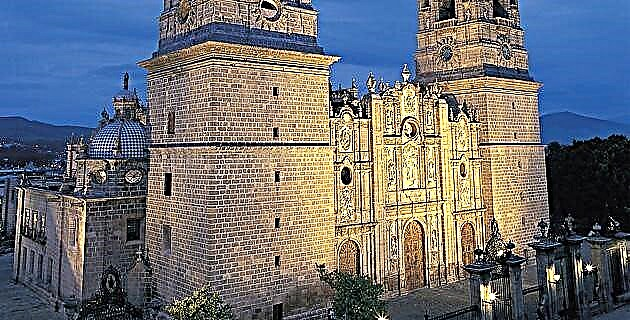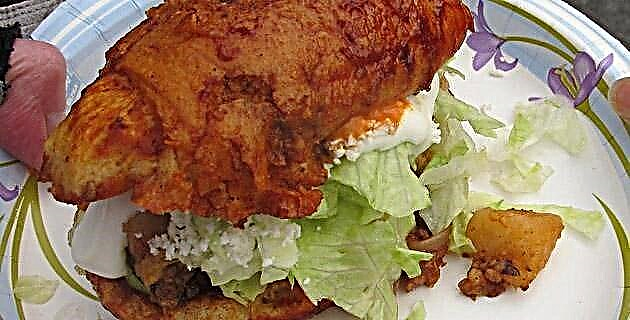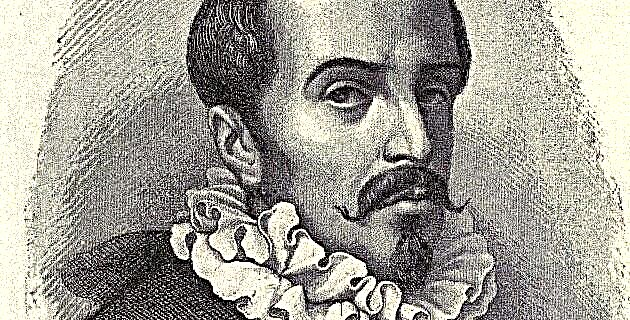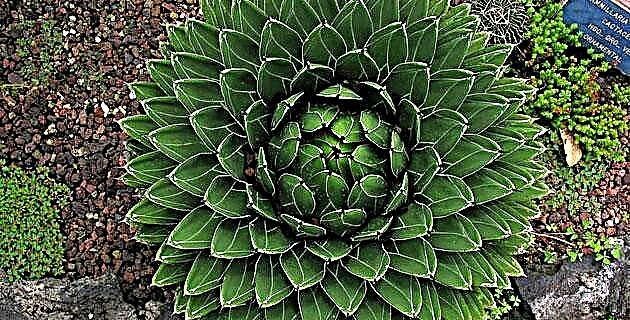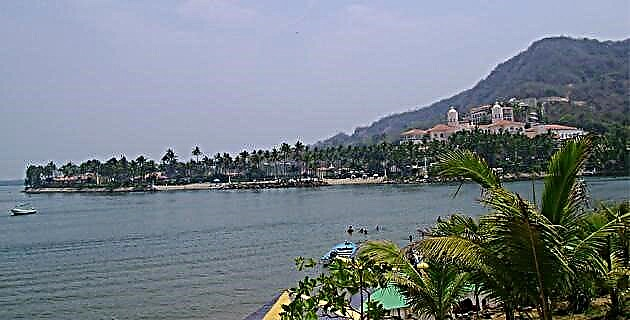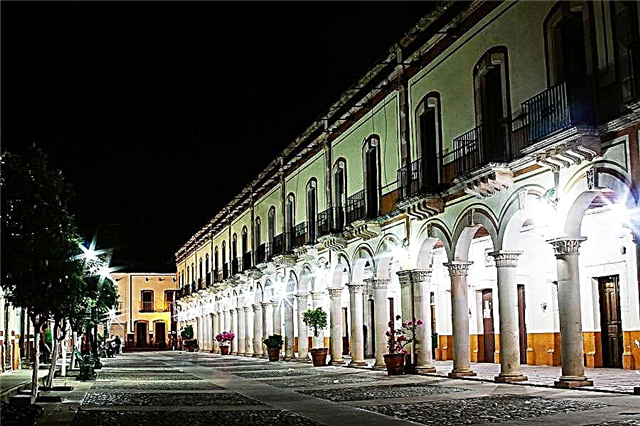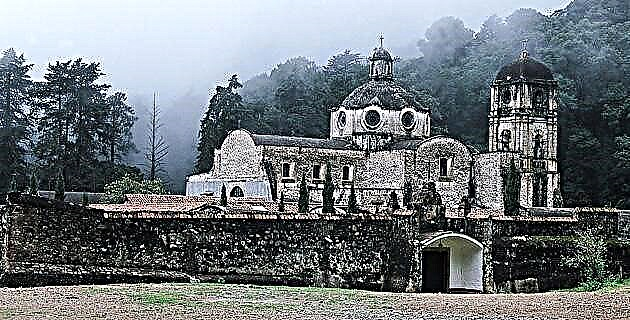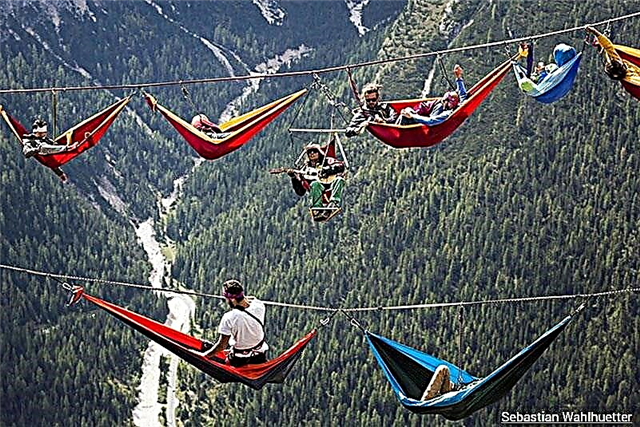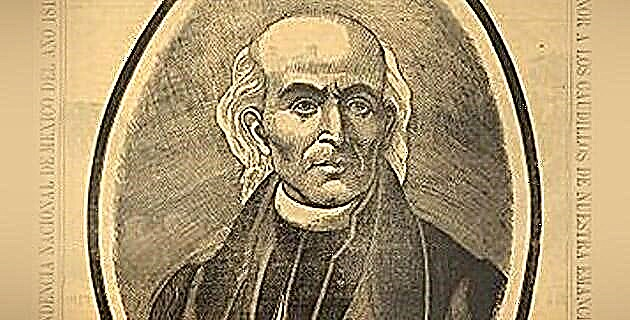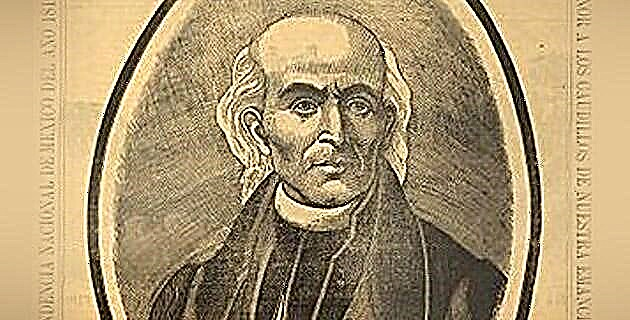
On the same day 16 Hidalgo and his men left Dolores, marching to San Miguel el Grande, and at nightfall they entered the town.
There the Queen's Regiment joined them, and on the way a multitude of rural people, mainly Indians, armed with arrows, sticks, slings and farming instruments, without order, without discipline, following their captains of the haciendas as chiefs. ; mounted the cavalry on skinny and bad horses, the horsemen with few spears, and the swords and machetes typical of their country occupations. Those people marched following a strong instinct that drove him and that he could not define, but he had no flag; When passing through Atotonilco, Hidalgo found an image of Our Lady of Guadalupe, made it suspend from the shaft of a spear, and that was the army's standard: in all the scripts a stamp of the sacred simulacrum was put, and the supporters used it for badge on the hat. The inscriptions placed next to the image were: “Long live religion. Long live our Holy Mother of Guadalupe. Long live Fernando VII. Long live America and the bad government dies. "
The insurgents, seizing the person of the Spaniards and looting their houses, passed through Chamacuero and entered Celaya on the 21st. Until then the revolution had no leader; In fact, the leaders who promoted it were, and out of deference to age, knowledge and the character of a priest, Hidalgo represented the first place; to give legality to the fact, on the 22nd, with the assistance of the Celaya City Council, Hidalgo was appointed, general; Allende, Lieutenant General; whereupon he was invested with the supreme command, by unanimous consent. The army then numbered about 50,000 men, and had seen several companies of the provincials of the town pass into its ranks. With those forces, they advanced on Guanajuato, and on the 28th the city fell into their hands, after a bloody combat in the Alhóndiga de Granaditas, whose defenders perished after being put to the knife.
After the first days, and with them the confusion, Hidalgo dedicated himself to organizing the City Council, appointed employees, set about establishing a cannon foundry, a Mint, and devoted himself as soon as he could to take advantage of his conquest. Meanwhile, the Government got ready to fight the revolution. The elected bishop of Michoacán, Abad y Queipo, published an edict on September 24, declaring Hidalgo, Allende, Aldama, and Abasolo excommunicated.
The army continued to Maravatío, Tepetongo, Hacienda de la Jorda, Ixtlahuaca, and Toluca, and on October 30 thrashed the forces of Torcuato Trujillo, commanded by Viceroy Venegas to contain it, on the Monte de las Cruces. With this victory the road to the capital was opened; Allende was of opinion that advance on her would risk a decisive blow; Hidalgo objected, alleging the lack of ammunition, the loss suffered in the battle, which had instilled great terror in the newcomers, the approach of the royalist troops under Calleja's command, and the doubtful success of a combat against the not inconsiderable garrison of the city. Without doing anything, they stayed at the gates of Mexico until November 1 and on November 2 they began to go back the way they had come, with the intention of going to seize Querétaro.
The first evil, a result of the retrograde step, was to lose half of the people to desertion. The insurgents were ignorant of the direction the royalist army was heading and the operations it had carried out; The news of their approach was learned by the dispersed of a party, who in the Arroyozarco hacienda found the enemy discovered. The battle was already inevitable; Despite their casualties, the insurgents numbered over forty thousand men, with twelve pieces of artillery, and took up position on the almost rectangular hill that extends from the town to the Aculco hill. At dawn on November 7, they were attacked, and completely dispersed without fighting, leaving their luggage and war tools in the field. Allende withdrew for Guanajuato; Hidalgo entered Valladolid with five or six people, the numerous forces assembled shortly before having diminished. The purpose of the separation of the two chiefs was to put Guanajuato in a state of defense, while new men were recruited, artillery was melted down, and divisions were organized to attack the victors simultaneously.
On the 15th of November Allende participated in his resolution, and on the 17th he left Valladolid with seven thousand cavalry men and two hundred and forty infantrymen, all poorly armed, entering Guadalajara on the 26th. Allende, who saw Calleja approaching with his army, easily raiding the towns in his transit, on November 19 condemned the march of his companion, and writes that instead of walking away thinking about his personal safety, think about that of all, and come with your troops to help the square, in combination with other games: on the 20th he repeated another letter of the same tenor. Since Guanajuato was lost on November 25, retreating was no longer of any benefit.
After the taking of Guanajuato by the royalists, Allende marched to Zacatecas and from there to Guadalajara, where he entered on December 12, Valladolid lost its forces and the authorities also withdrew to that square, which became the focus of the revolution. An attempt was then made to establish a government of which Hidalgo was head, with two ministers, one of "Grace and Justice" and another called "Secretary of State and Office" but it did not work.
Allende opined, assuming that a battle was inevitable, because the organized troop with the useful artillery was taken to the field, so that in the event of a setback the bulk of the army would remain standing, while it could be instructed, leaving a safe withdrawal and a point of support in the city; to the contrary, Hidalgo opined, and the votes of the council were decided by him. Consequently, the army made up of about one hundred thousand men, with twenty thousand horsemen and ninety-five guns, left the town on January 14, 1811 to camp on the plains of the Guadalajara bridge, and on the 15th to take a military position in the Calderón bridge, a place chosen by Allende and Abasolo. The insurgents were defeated and the army disbanded.

